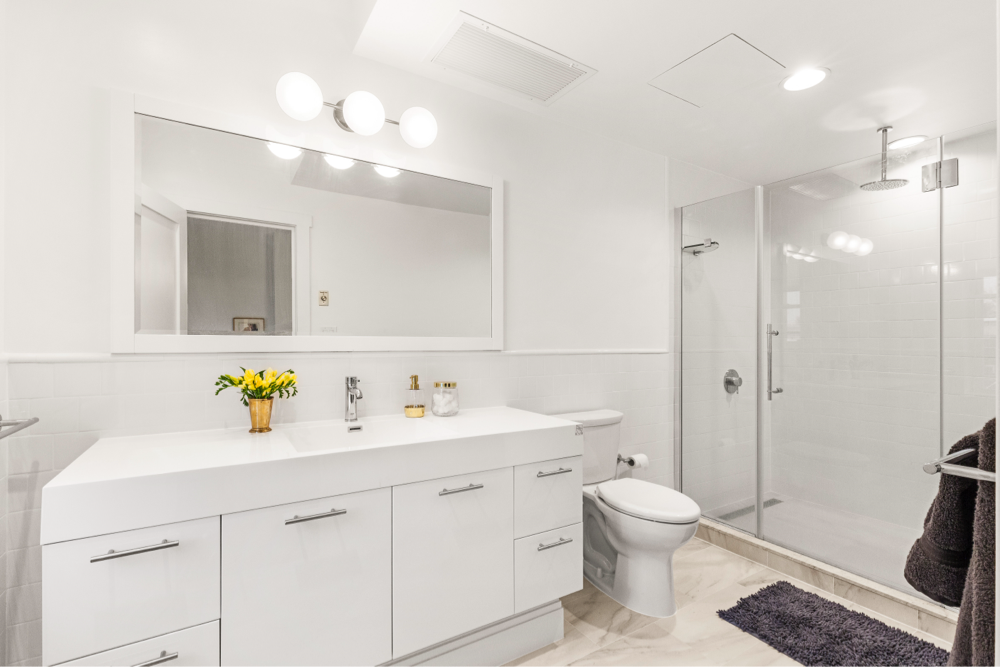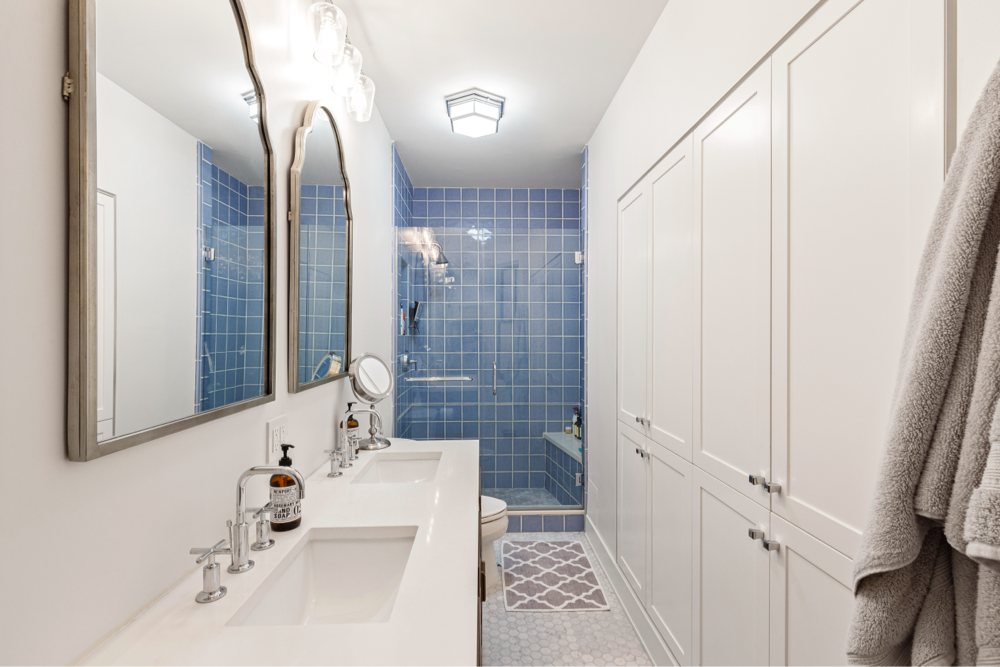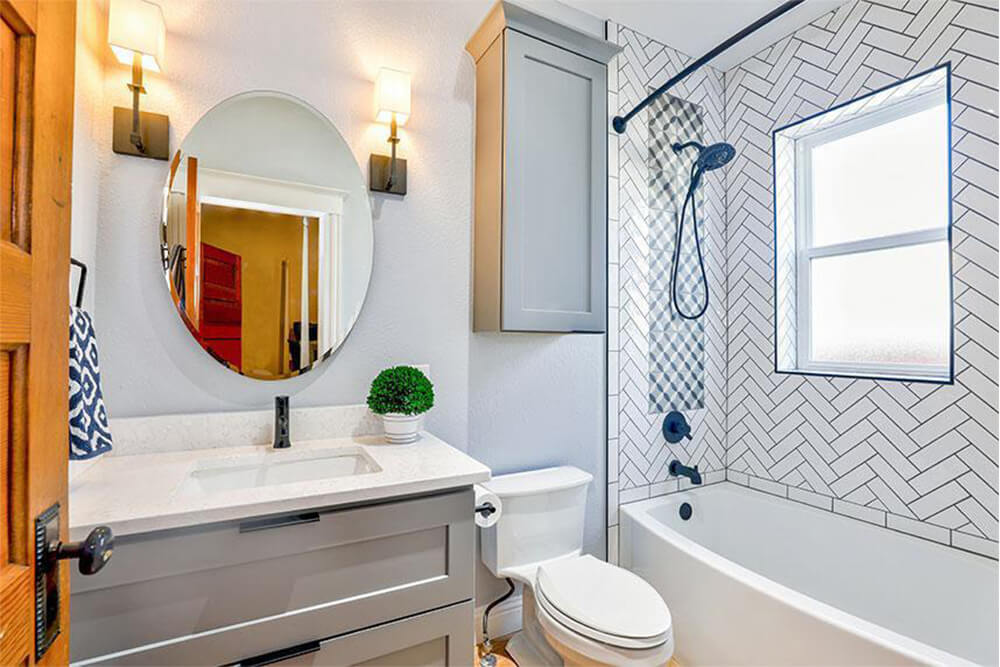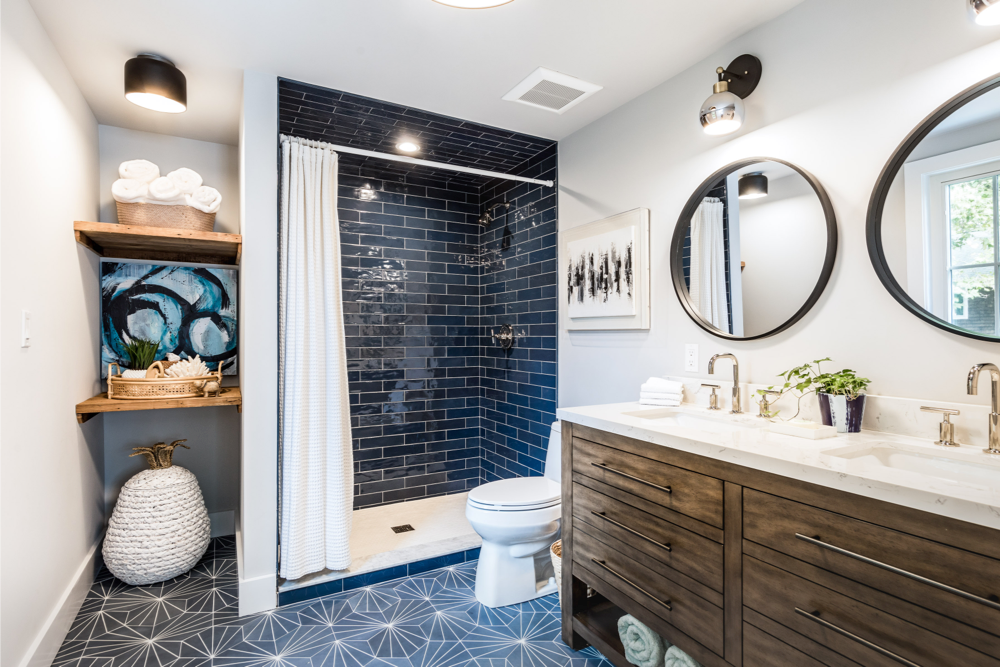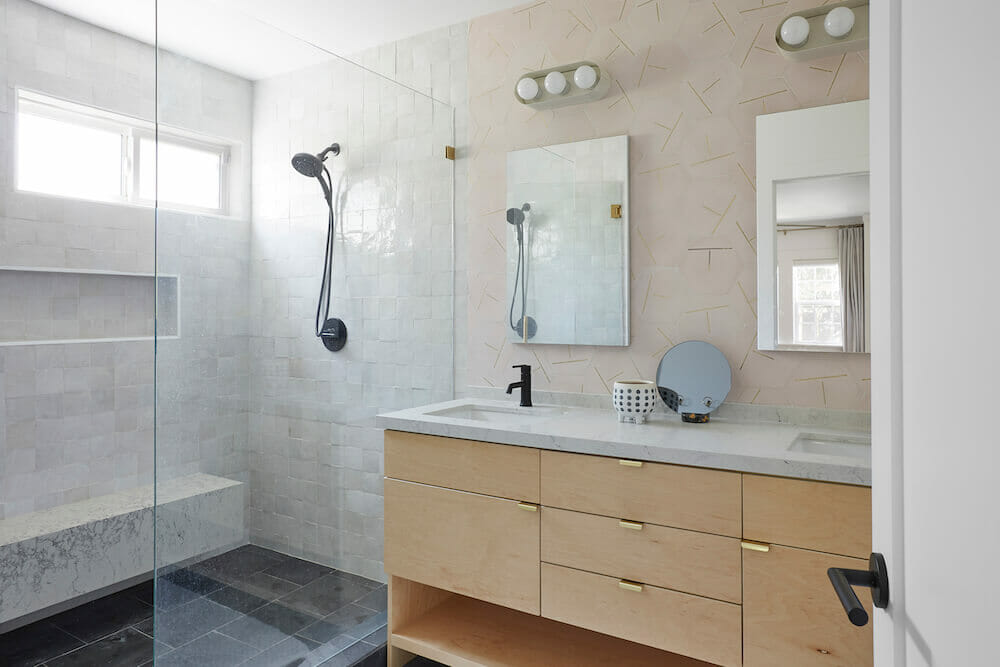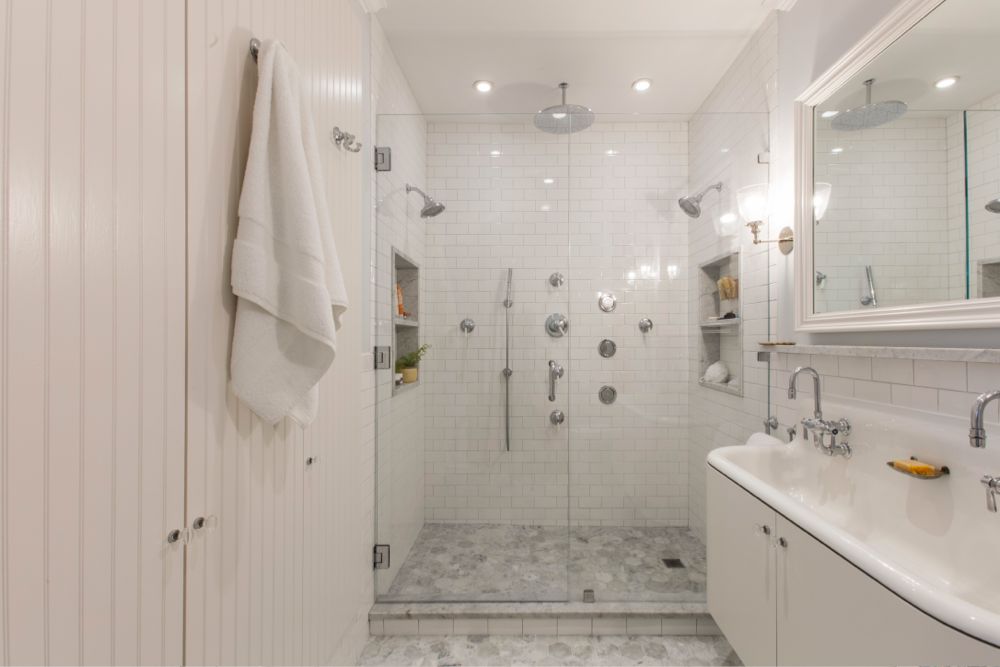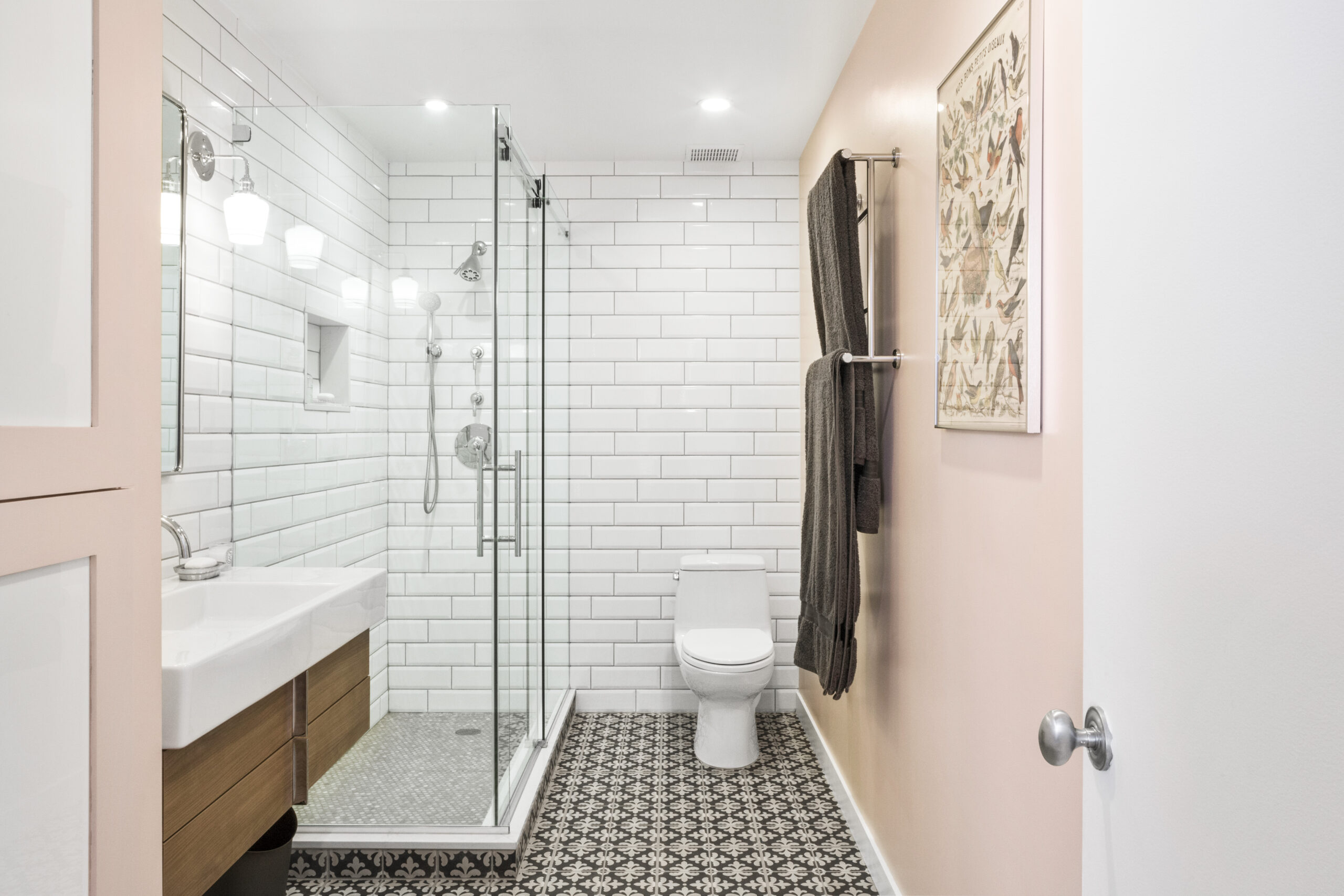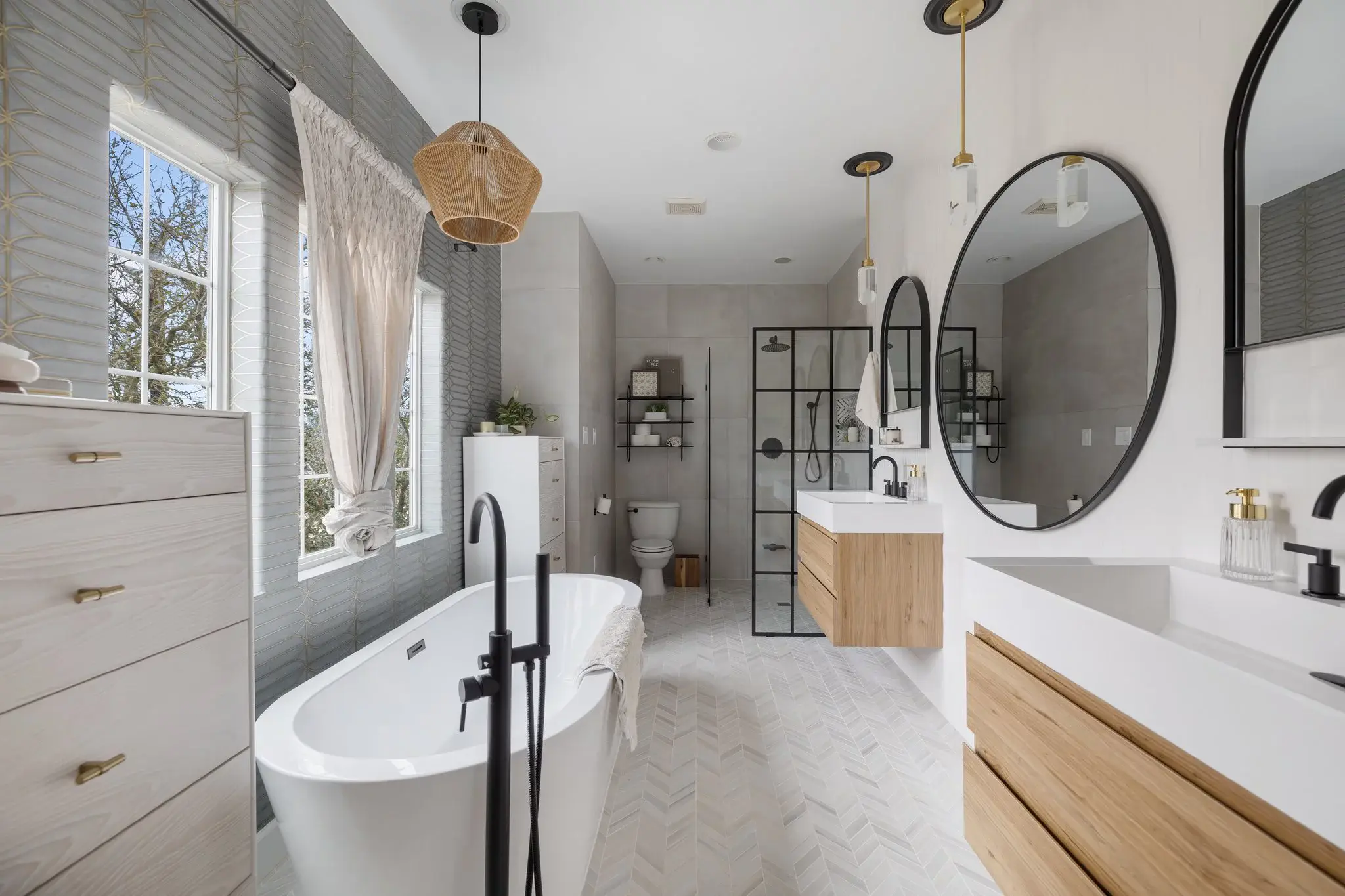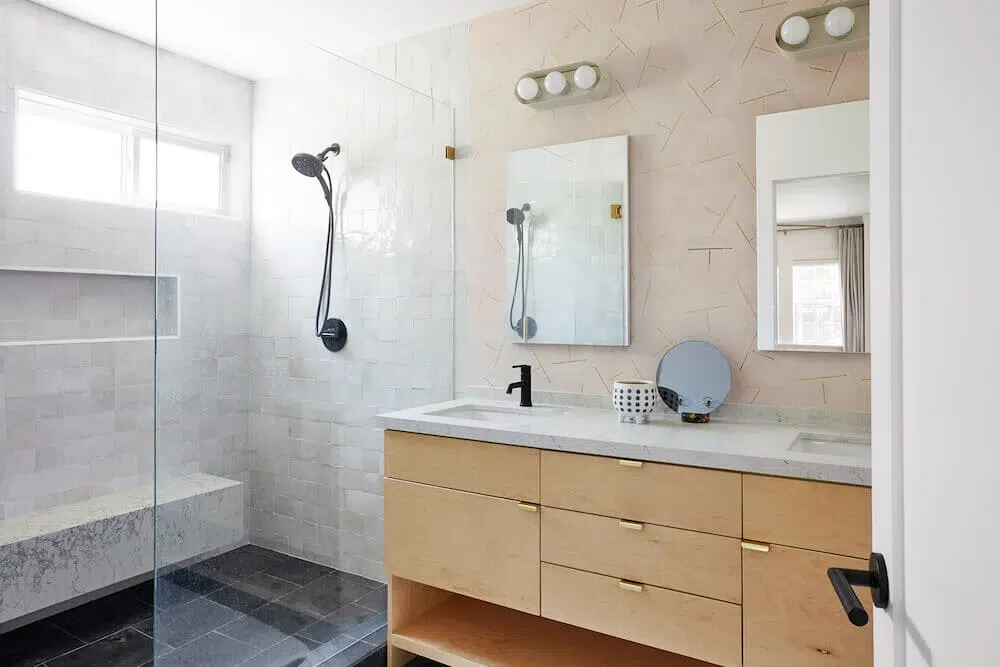A Guide to Remodeling a Bathroom in Washington DC
Are you thinking of remodeling your bathroom in Washington, D.C.? It’s a great way to improve your home’s value and create a relaxing space. But before you start, there are some things to consider. This guide will help you plan your bathroom remodel, from budgeting and permits to choosing the right contractor and design. We’ll also cover some of the unique challenges of renovating in D.C. Let’s get started!
What to know about bathroom remodeling in Washington DC from costs and permits to ventilation

Washington DC has limitless possibilities that make it one of the most exciting places to live in the U.S. If you are considering bathroom remodeling in Washington DC, you may find a parallel set of challenges and possibilities for your project. Not to worry: here we outline what to know before you renovate a bathroom in the DC area.
At Sweeten, we’re experts at all things general contractors — we pre-screen them for our network, carefully select the best ones for your remodeling project, and work closely with hundreds of general contractors every day. So, we’ve tapped our internal expertise to bring you this guide.
Defining the area around Washington DC
Remodeling a bathroom in Washington DC first means hammering down its geography.
The commonly held notion is that DC consists of the District, Southern Maryland, and Northern Virginia. Sweeten currently services the DC area, Montgomery and Howard counties in Maryland, and select counties in Virginia, including Fairfax and Arlington.
Exterior architecture
Part of what makes the DC area so appealing is its architecturally significant buildings. Many older and noteworthy buildings are within the District, specifically Georgetown, Capitol Hill, Adams Morgan, and Dupont.
Southern Maryland and Northern Virginia do have some historically important buildings, but not to the extent that the District does. Sweeten brings homeowners an exceptional renovation experience by personally matching trusted general contractors to your project, while offering expert guidance and support—at no cost to you. Renovate expertly with Sweeten
In the District, Preservation Reviews by the Office of Planning tend to concentrate on exterior work. Interior alterations and non-structural interior demolition are both permitted activities but are exempt from Preservation Reviews.
Renovation bathroom costs in Washington DC
The cost of remodeling a high-end bathroom in the South Atlantic region, which includes the DC metro area, is higher than the national average. Starting costs for a low-end bathroom remodel is $16,500. A mid-range budget starts at around $26,000. A high-end remodel starts at $38,000 for a 4– or 5–piece bath. (You can read more in Sweeten’s bathroom remodeling cost guide for Washington DC). Contractors will be able to provide you with more detailed estimates after a site visit. It’s also important to meet with licensed general contractors in Washington DC with local experience who are up-to-date on codes and regulations.
“Rip-and-replace” bathroom remodels in older homes
A “rip-and-replace” bathroom remodel will always save you money over a full remodel. Like the name says, fixtures are pulled out and replaced. The footprint does not change, nor does the drywall, subfloor, pipes, or wiring. In a “rip-and-replace,” the most expensive items are the toilet, tub or shower, faucet, sink, and cabinet.
But there is a catch: Washington DC has a significantly older housing stock. East of the Capitol, north of the K Street business district, up Georgia Avenue, and on either side of the 16th Street corridor, houses can be 100 years old or more. This means that a “rip-and-replace” remodel is usually not possible if the bathroom is in its original state.
Bathroom remodels for these older homes usually require a full gutting to expose the insides of the walls, including pipes and wiring. Knob-and-tube wiring, common in these homes, must be replaced with modern non-metallic wiring. Additionally, the service panel should be updated. When the studs are bowed or broken, they can be sistered with a parallel stud to the side.
Many of these older DC homes were solidly built with materials considered premium for their time. Common materials that DC homeowners will encounter are cast iron tubs, two-by-fours that actually measure 2 inches by 4 inches, heavy joists, and linoleum. These items can be difficult to remove. For example, homeowners removing cast-iron tubs will need to break or cut them apart on-site to assist with removal.
The DC climate challenge
DC’s summers can be sweltering, with temperatures soaring well into the 80s and even reaching triple digits. Coupled with high humidity, this creates a perfect environment for moisture to accumulate, especially in bathrooms. To combat this and prevent mold and mildew growth, consider these strategies:
Moisture management solutions
- Adequate Bathroom Exhaust Fan: Ensure your bathroom has a powerful exhaust fan that runs continuously during and after showers.
- Openable Window: When weather permits, open the bathroom window to improve ventilation and reduce humidity.
- Dehumidifier: A dehumidifier can help remove excess moisture from the air, especially during peak humidity periods.
- Heated Flooring: Heated floors can help dry out the bathroom and prevent moisture buildup.
- Wall Heater: A small wall heater can provide additional heat and help reduce humidity.
- Mold-Resistant Paint: Use mold-resistant paint on bathroom walls and ceilings to help prevent mold growth.
- Moisture-Resistant Ceiling: Consider installing a moisture-resistant ceiling material to protect against water damage.
- Moisture-Resistant Materials: Opt for moisture-resistant materials like waterproof drywall or ceramic tiles.
Navigating permits and building approvals
Bathroom remodeling permits are required in DC, Montgomery County, and Fairfax County. The specific requirements may vary, but generally, you’ll need to submit architectural plans and obtain necessary permits.
Condo living considerations
If you live in a condo, obtaining building approval can be more complex. Condo boards often have specific guidelines and requirements for renovations, especially those that involve shared spaces or services like plumbing and electrical.
Tips for a smooth approval process:
- Work with an Experienced Contractor: A knowledgeable contractor can guide you through the approval process and help you address any concerns.
- Prepare Thorough Plans: Submit detailed plans that demonstrate how your remodel will comply with building codes and condo association rules.
- Communicate Effectively: Maintain open communication with your condo board and address their questions or concerns promptly.
- Be Flexible: Be prepared to make adjustments to your plans if necessary to accommodate the board’s requirements.
By carefully considering the unique challenges of DC’s humid climate and navigating the permitting process, you can successfully remodel your bathroom. With the right strategies and planning, you can create a beautiful and functional space that will enhance your home’s value and provide a relaxing retreat.
Ready to renovate your bathroom?
Post your project on Sweeten today and get matched with our vetted general contractors for free! Find endless home renovation inspiration, detailed guides, and practical cost breakdowns from our blogs.
